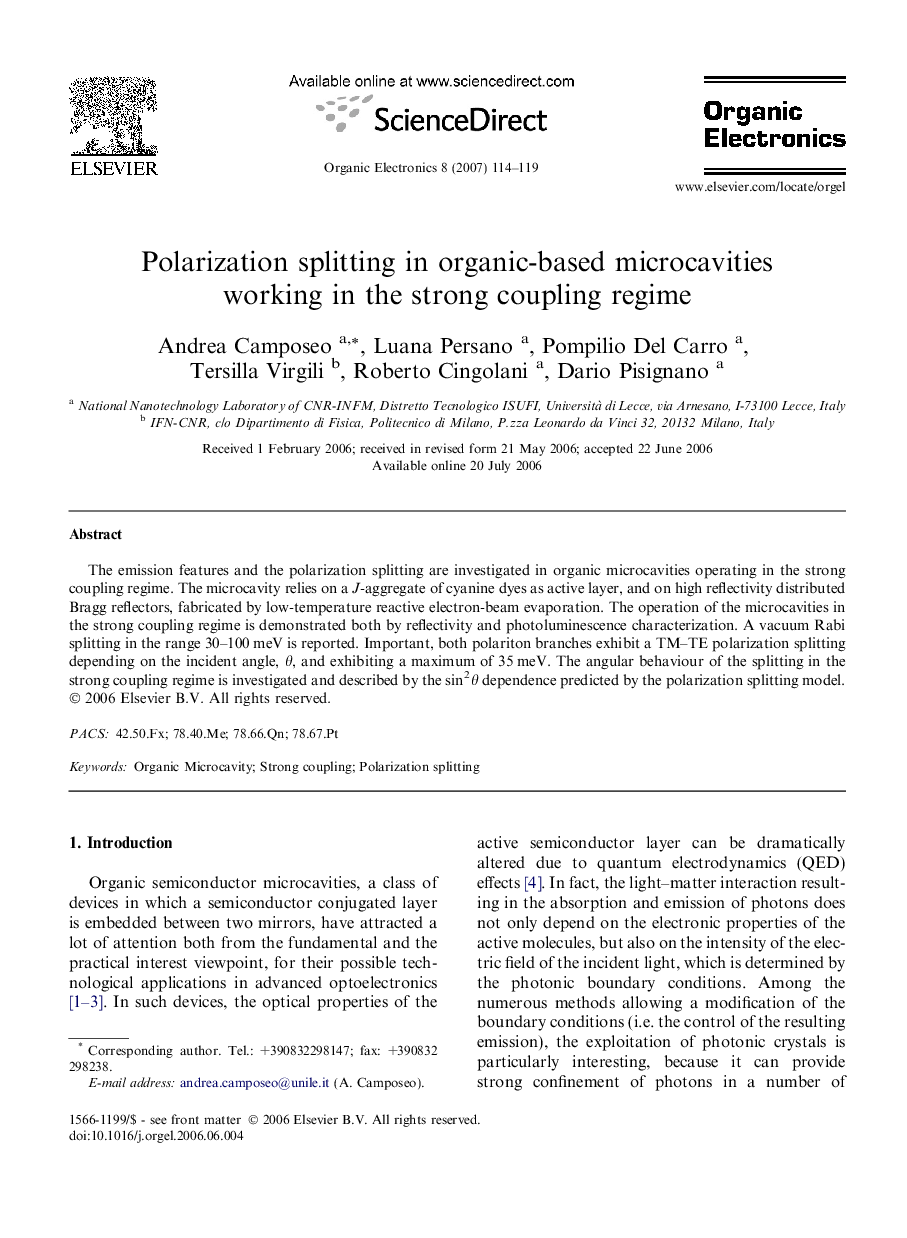| Article ID | Journal | Published Year | Pages | File Type |
|---|---|---|---|---|
| 1264449 | Organic Electronics | 2007 | 6 Pages |
The emission features and the polarization splitting are investigated in organic microcavities operating in the strong coupling regime. The microcavity relies on a J-aggregate of cyanine dyes as active layer, and on high reflectivity distributed Bragg reflectors, fabricated by low-temperature reactive electron-beam evaporation. The operation of the microcavities in the strong coupling regime is demonstrated both by reflectivity and photoluminescence characterization. A vacuum Rabi splitting in the range 30–100 meV is reported. Important, both polariton branches exhibit a TM–TE polarization splitting depending on the incident angle, θ, and exhibiting a maximum of 35 meV. The angular behaviour of the splitting in the strong coupling regime is investigated and described by the sin2 θ dependence predicted by the polarization splitting model.
